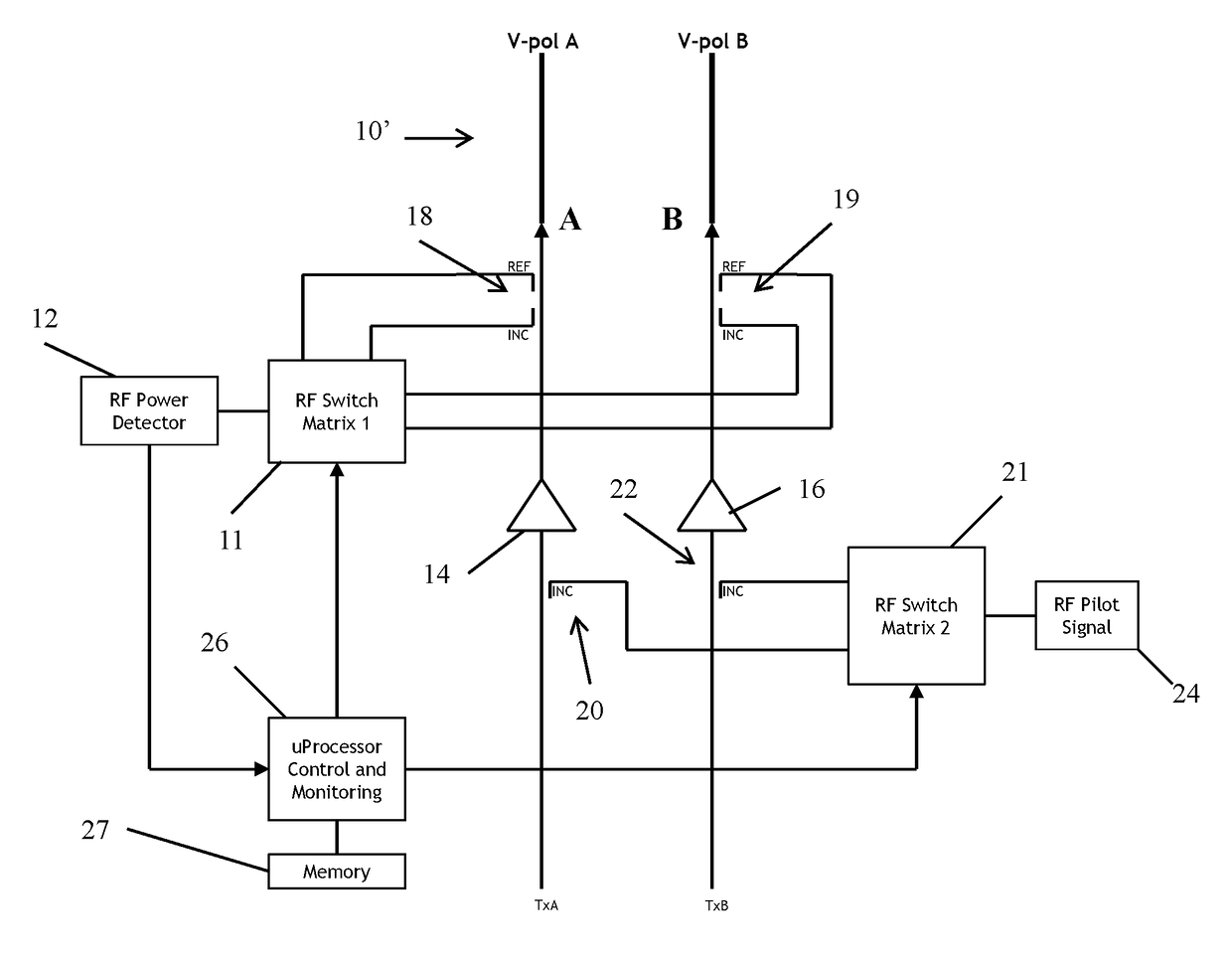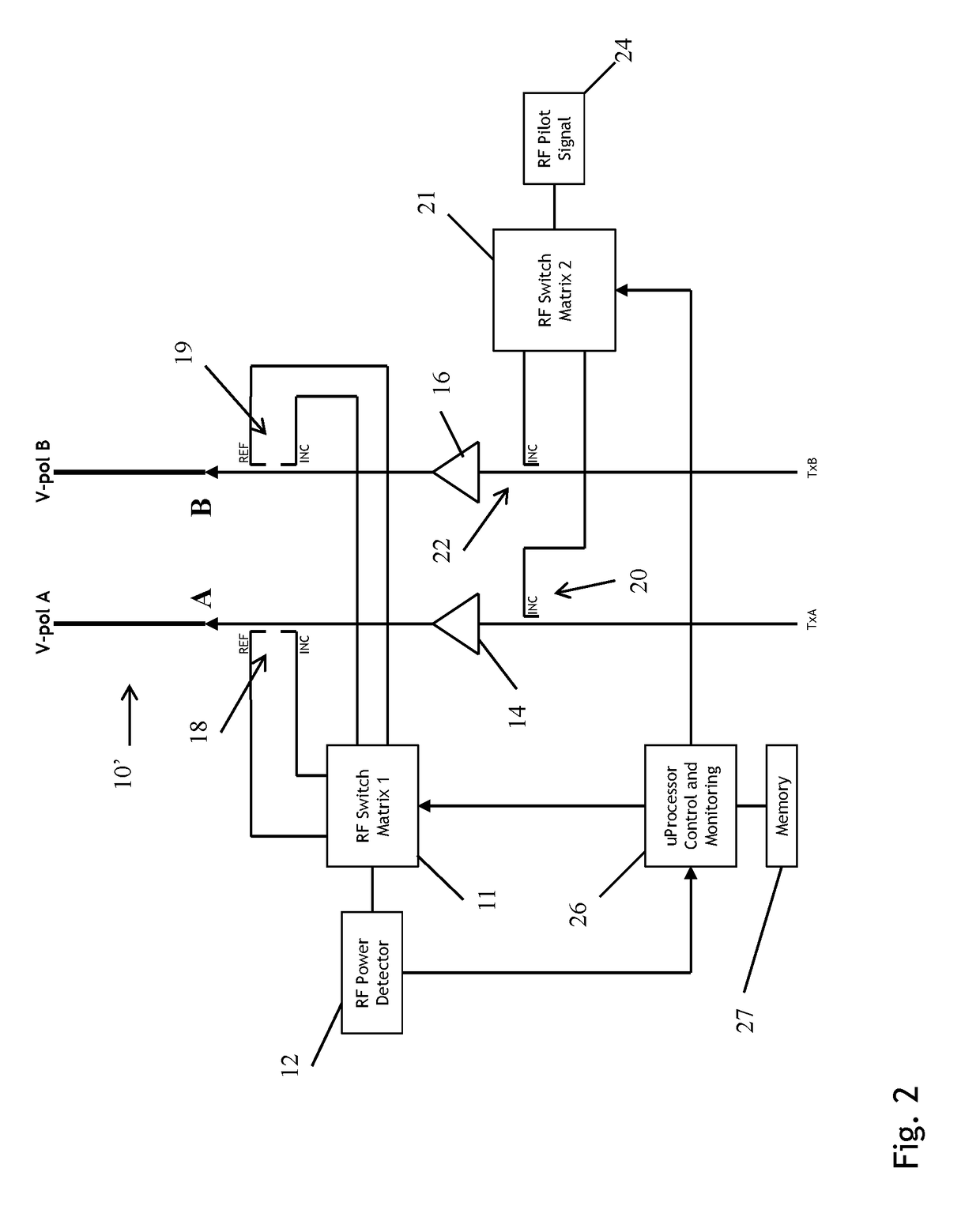Antenna element self-test and monitoring
a phased array, self-testing technology, applied in the direction of transmitter monitoring, individual energised antenna arrays, transmission monitoring, etc., can solve the problems of bending, breaking, or presenting poor rf connection of one connection, requiring a bulky external measuring device, and requiring limited portability of external measuring devices
- Summary
- Abstract
- Description
- Claims
- Application Information
AI Technical Summary
Benefits of technology
Problems solved by technology
Method used
Image
Examples
Embodiment Construction
[0019]Described below are two internal measuring methods for determining whether each array element is properly connected to the respective transceiver. Each array element typically consists of two orthogonally polarized radiating elements, typically 90 degrees apart from each other, as in a cross-polarized (x-pol) or horizontal-vertical polarized (HV-pol) element. Each pair of orthogonally polarized elements is self-tested by performing a return loss measurement on each individual radiating element and by performing a cross element gain measurement in each direction.
[0020]In general, to perform a return loss measurement, a signal is transmitted to a radiating element. Part of that signal is reflected back toward the transmitter based on the return loss or VSWR (Voltage Standing Wave Ratio) of the radiating element. (Note that a VSWR measurement is a form of return loss measurement as both are based on measuring reflected power.) With the use of a dual-directional coupler placed at ...
PUM
 Login to View More
Login to View More Abstract
Description
Claims
Application Information
 Login to View More
Login to View More - R&D
- Intellectual Property
- Life Sciences
- Materials
- Tech Scout
- Unparalleled Data Quality
- Higher Quality Content
- 60% Fewer Hallucinations
Browse by: Latest US Patents, China's latest patents, Technical Efficacy Thesaurus, Application Domain, Technology Topic, Popular Technical Reports.
© 2025 PatSnap. All rights reserved.Legal|Privacy policy|Modern Slavery Act Transparency Statement|Sitemap|About US| Contact US: help@patsnap.com



